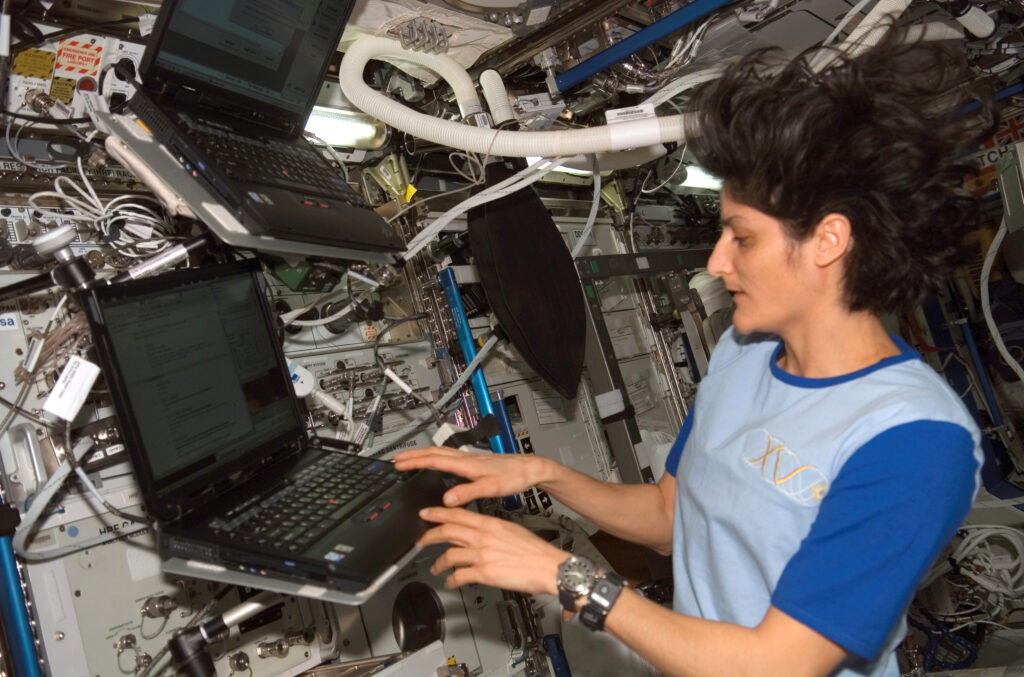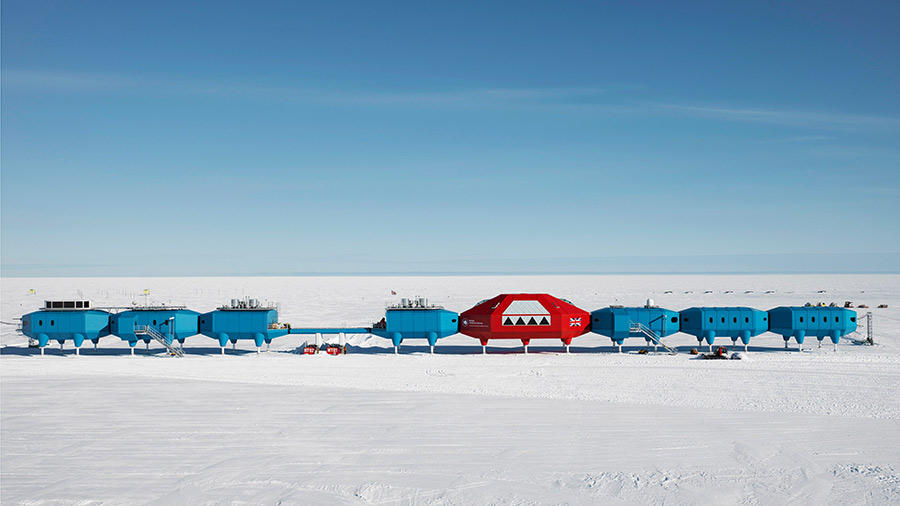Feeling sorry for yourself after a week of Shelter In Place? No whining, please. The astronauts NASA plans to send to Mars will be sheltering in place for nine months in a cramped metal tube. Let’s see what we can learn from NASA’s plans.
NASA is just beginning to grapple with the emotional impact of long journeys through deep space. Often we can look to science fiction for inspiration, but we’ll get no help in this case. Science fiction writers use two tricks to skate around the thorny issue of long, long journeys through space:

Warp Drive: A convenient plot device for avoiding endless travel time

Hypersleep: The second sci-fi trick to cheat time
You may have heard about the physiological challenges of travel in deep space: Bone demineralization, radiation exposure, eyesight degradation. Barring the invention of a warp coil, astronauts transiting to Mars will face a slew of psychological challenges as well. Cramped, long-duration space travel could lead to fatigue, anxiety, decreased brain functioning….even psychotic breakdown.
How can NASA mission planners address some of the psychological risks of deep-space missions, long before we set out for Mars? For challenges like these, I always recommend finding analogous experiences to help find direction. Let’s see what we can learn from astronauts orbiting Earth on the International Space Station, as well as roughly analogous endeavors such as submarine missions or exploration of the poles.
Meaningful Work
Cultural anthropologist Jack Stuster pored over journals written by astronauts on the International Space Station. What made life difficult for the astronauts? The majority of frustrations came from workflow issues that are probably quite familiar to you: Insufficient time to complete tasks, poorly written instructions, conflicting leadership demands.
Stuster’s recommendations to NASA for maintaining emotional equilibrium during long space voyages will also sound familiar to you. Examples: Allow the astronauts to control their schedules if possible, design tasks to have tangible benefits, and distribute tedious work across all crew members. One interesting tidbit from his research: There’s evidence that the act of journaling was helpful, in and of itself.

Effective Leadership
When I asked my good friend Commander Noel Gonzalez to share with NASA his experience while undersea for months as Captain of the Navy submarine USS Cheyenne, he pointed immediately to leadership as key to maintaining morale (and sanity) of his crew. Beyond basic leadership strategies such as clear communication and effective delegation, Noel prides himself on his sensitivity to the intangibles on board his submarine: Mood, energy, tone.
From a very different vantage point, Organizational Psychologist Lacy Schmidt agrees. While studying the team climate at Antarctic Research Stations, she points to quality of leadership as a key influencer of group behavioral health. In particular, Schmidt highlights the importance of interpersonal interactions to influence others’ perceptions. Faced with the desolate environment of Antarctica (and, by extension, Mars) she states that “the objective characteristics of an extreme environment are less important than subjective perceptions of the environment in relation to performance“.
It’s incumbent on any leader to maintain the team’s morale, and it will be essential for future leaders of Mars missions to look after the crew’s emotional well-being en route to the red planet. I hope they’ll take leadership advice from submariners and antarctic explorers. Fostering teamwork and solidarity are critical to reduce conflicts and stress.

Communications with Earth
In Jack Stuster’s review of astronaut journals, he found that communication with family and friends back on Earth was a welcome relief from the monotony of the space station environment, the lack of social variation, and the limited privacy. No surprise there, but here’s an interesting implication: Social connection, even with a long time delay, will help astronauts combat the third-quarter phenomenon which is consistent across all the missions I’ve mentioned. Whether you’re cooped up in a submarine or wintering over in Antarctica, there is a decline in performance during the third quarter of missions in isolated, confined, and extreme environments, regardless of actual mission duration.
And speaking of maintaining long-distance connections with family and friends…As long as we’re all sheltering in place, think about taking a cue from the astronauts. Set up video cocktail hours and video dance parties with your friends and family. We’re planning our second virtual cocktail party tonight, complete with online games.
VR-Enhanced Training and Entertainment
While underway to Mars, astronauts may leave the ship to enter an artificial environment using virtual reality headsets. You can imagine VR’s contribution to training. Astronauts have time to practice Mars surface operations while on the nine-month journey. Imagine maintaining certain high priority skills, like piloting the Space Exploration Vehicle across the Martian terrain. VR gear could also make it easier for astronauts to learn new skills such as geological investigations, or even how to conduct astronomical observations between Earth and Mars.
And if astronauts are bringing along VR gear for enhanced training, you can bet a holodeck application will be thrown in for some entertainment. Sign me up.
Talk to me….
I hope you’re inspired by NASA’s plans to visit Mars. Humans are built to explore, and Humanity’s aspirations to explore space will drive us toward unprecedented technological innovations that will undoubtedly benefit mankind in one way or another.
Talk to me. Inspiring? Thrilling? Wasteful? Gratuitous? As always, I welcome all comments. We all advance our thinking and ourselves through open-mindedness, humility, and tolerance for other points of view.